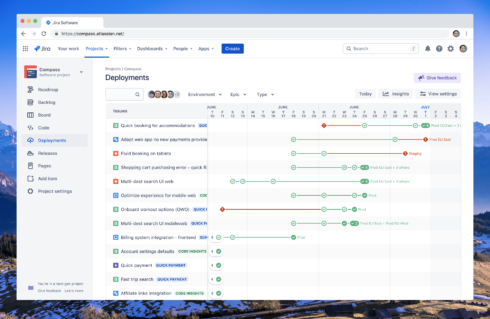
Atlassian is adding four new features to its Jira Software Cloud in order to give DevOps teams more ways to visualize and measure progress. In a recent 2020 DevOps Trend Survey, the company found that about half of DevOps teams are struggling to measure and improve business value. The new features are designed to provide a deeper understanding from idea through to production and across Atlassian and third-party tools, explained Suzie Prince, head of product for DevOps at Atlassian.
“Measuring sense of your data is essential to the financial health of your company. It’s how you know whether your DevOps practices are moving the bottom line, and whether they’re actually helping your team ship faster or deliver better code,” Prince wrote in a post.
According to Prince, one of the biggest challenges DevOps teams face is how tools are integrated. “No single vendor will ever deliver all the products an agile software team needs, so the burden still lies on the team to manually connect the dots,” Prince explained.
To help connect the dots, the company has announced deployments, deployment frequency, and cycle time capabilities for Jira.
Code in Jira enables teams to view recently active repos across Bitbucket, GitHub, GitLab or Git integration.
Deployments in Jira provide a real-time view of where deployments are without having to ask a developer how things are going. “Lack of access to this information can slow decision-making and lead to more meetings and even duplication of work,” said Prince.
Deployment frequency tracks performance across any CI/CD provider and detects trends so teams can understand the value they are shipping and how it changes over time.
And lastly cycle time is designed to track the granular view of each segment in a development workflow including current cycle time and historical trends. “Using the Cycle Time calculation, you can see which segments are taking longer than expected, identify bottlenecks, and determine where problems most commonly occur,” Prince wrote.






